Criticial Assessment of the Photocatalytic Reduction of Cr(VI) over Au/TiO2
Abstract
:1. Introduction
2. Results
2.1. Photocatalytic Activity
2.2. Catalytic Characterization
2.2.1. UV-Vis Diffuse Reflectance Spectroscopy (UV-Vis DRS)
2.2.2. Chemical Composition of the Photocatalysts
2.2.3. Crystal Structure and TEM
2.2.4. Discussion of the Mechanism
3. Materials and Methods
3.1. Materials
3.2. Catalytic Synthesis
3.3. Catalytic Characterization
3.4. Photocatalysis
4. Conclusions
Author Contributions
Funding
Acknowledgments
Conflicts of Interest
References
- Jacobs, J.A.; Testa, S.M. Overview of Chromium(VI) in the Environment: Background and History. In Chromium(VI) Handbook; Guertin, J., Jacobs, J.A., Avakian, C.P., Eds.; CRC Press: Boca Raton, FL, USA, 2004; Chapter 1. [Google Scholar]
- Guertin, J. Toxicity and Health Effects of Chromium (All Oxidation States). In Chromium(VI) Handbook; Guertin, J., Jacobs, J.A., Avakian, C.P., Eds.; CRC Press: Boca Raton, FL, USA, 2004; Chapter 6. [Google Scholar]
- Hawley, E.L.; Deeb, R.A.; Kavanaugh, M.C.; Jacobs, J.A. Treatment Technologies for Chromium(VI). In Chromium(VI) Handbook; Guertin, J., Jacobs, J.A., Avakian, C.P., Eds.; CRC Press: Boca Raton, FL, USA, 2004; Chapter 8. [Google Scholar]
- Yuan, J.; Chen, M.; Shi, J.; Shangguan, W. Preparations and photocatalytic hydrogen evolution of N-doped TiO2 from urea and titanium tetrachloride. Int. J. Hydrog. Energy 2006, 31, 1326–1331. [Google Scholar] [CrossRef]
- Kato, H.; Kudo, A. Visible-Light-Response and Photocatalytic Activities of TiO2 and SrTiO3 Photocatalysts Codoped with Antimony and Chromium. J. Phys. Chem. B 2002, 106, 5029–5034. [Google Scholar] [CrossRef]
- Daghrir, R.; Drogui, P.; Robert, D. Modified TiO2 For Environmental Photocatalytic Applications: A Review. Ind. Eng. Chem. Res. 2013, 52, 3581–3599. [Google Scholar] [CrossRef]
- Tian, Y.; Tatsuma, T. Mechanisms and Applications of Plasmon-Induced Charge Separation at TiO2 Films Loaded with Gold Nanoparticles. J. Am. Chem. Soc. 2005, 127, 7632–7637. [Google Scholar] [CrossRef] [PubMed]
- Litter, M.I. Last advances on TiO2-photocatalytic removal of chromium, uranium and arsenic. Curr. Opin. Green Sustain. Chem. 2017, 6, 150–158. [Google Scholar] [CrossRef]
- Meichtry, J.M.; Brusa, M.; Mailhot, G.; Grela, M.A.; Litter, M.I. Heterogeneous photocatalysis of Cr(VI) in the presence of citric acid over TiO2 particles: Relevance of Cr(V)–citrate complexes. Appl. Catal. B 2007, 71, 101–107. [Google Scholar] [CrossRef]
- Meichtry, J.M.; Quici, N.; Mailhot, G.; Litter, M.I. Heterogeneous photocatalytic degradation of citric acid over TiO2: II. Mechanism of citric acid degradation. Appl. Catal. B 2011, 102, 555–562. [Google Scholar] [CrossRef]
- Priebe, J.B.; Radnik, J.; Lennox, A.J.J.; Pohl, M.-M.; Karnahl, M.; Hollmann, D.; Grabow, K.; Bentrup, U.; Junge, H.; Beller, M.; et al. Solar Hydrogen Production by Plasmonic Au–TiO2 Catalysts: Impact of Synthesis Protocol and TiO2 Phase on Charge Transfer Efficiency and H2 Evolution Rates. ACS Catal. 2015, 2137–2148. [Google Scholar] [CrossRef]
- Dozzi, M.V.; Saccomanni, A.; Selli, E. Cr(VI) photocatalytic reduction: Effects of simultaneous organics oxidation and of gold nanoparticles photodeposition on TiO2. J. Hazard. Mater. 2012, 211–212, 188–195. [Google Scholar] [CrossRef] [PubMed]
- Liu, X.; Lv, T.; Liu, Y.; Pan, L.; Sun, Z. TiO2–Au composite for efficient UV photocatalytic reduction of Cr(VI). Desalin. Water Treat. 2013, 51, 3889–3895. [Google Scholar] [CrossRef]
- Tanaka, A.; Nakanishi, K.; Hamada, R.; Hashimoto, K.; Kominami, H. Simultaneous and Stoichiometric Water Oxidation and Cr(VI) Reduction in Aqueous Suspensions of Functionalized Plasmonic Photocatalyst Au/TiO2–Pt under Irradiation of Green Light. ACS Catal. 2013, 3, 1886–1891. [Google Scholar] [CrossRef]
- Luo, S.; Xiao, Y.; Yang, L.; Liu, C.; Su, F.; Li, Y.; Cai, Q.; Zeng, G. Simultaneous detoxification of hexavalent chromium and acid orange 7 by a novel Au/TiO2 heterojunction composite nanotube arrays. Sep. Purif. Technol. 2011, 79, 85–91. [Google Scholar] [CrossRef]
- Satoh, N.; Hasegawa, H.; Tsujii, K.; Kimura, K. Photoinduced Coagulation of Au Nanocolloids. J. Phys. Chem. 1994, 98, 2143–2147. [Google Scholar] [CrossRef]
- Maeda, K.; Teramura, K.; Lu, D.; Saito, N.; Inoue, Y.; Domen, K. Roles of Rh/Cr2O3 (Core/Shell) Nanoparticles Photodeposited on Visible-Light-Responsive (Ga1-xZnx)(N1-xOx) Solid Solutions in Photocatalytic Overall Water Splitting. J. Phys. Chem. C 2007, 111, 7554–7560. [Google Scholar] [CrossRef]
- Soldat, J.; Marschall, R.; Wark, M. Improved overall water splitting with barium tantalate mixed oxide composites. Chem. Sci. 2014, 5, 3746–3752. [Google Scholar] [CrossRef] [Green Version]
- Busser, G.W.; Mei, B.; Muhler, M. Optimizing the Deposition of Hydrogen Evolution Sites on Suspended Semiconductor Particles using On-Line Photocatalytic Reforming of Aqueous Methanol Solutions. ChemSusChem 2012, 5, 2200–2206. [Google Scholar] [CrossRef] [PubMed]
- Yuan, X.; Feng, Z.; Zhao, J.; Niu, J.; Liu, J.; Peng, D.; Cheng, X. Significantly Enhanced Aqueous Cr(VI) Removal Performance of Bi/ZnO Nanocomposites via Synergistic Effect of Adsorption and SPR-Promoted Visible Light Photoreduction. Catalysts 2018, 8, 426. [Google Scholar] [CrossRef]
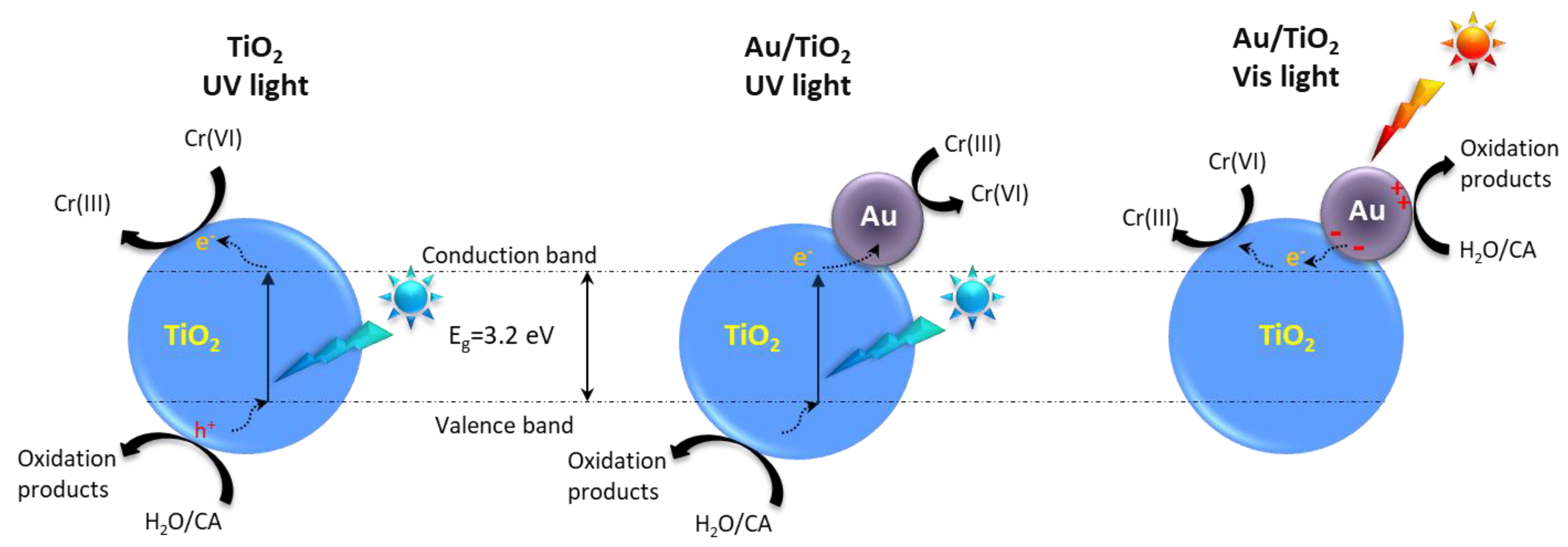

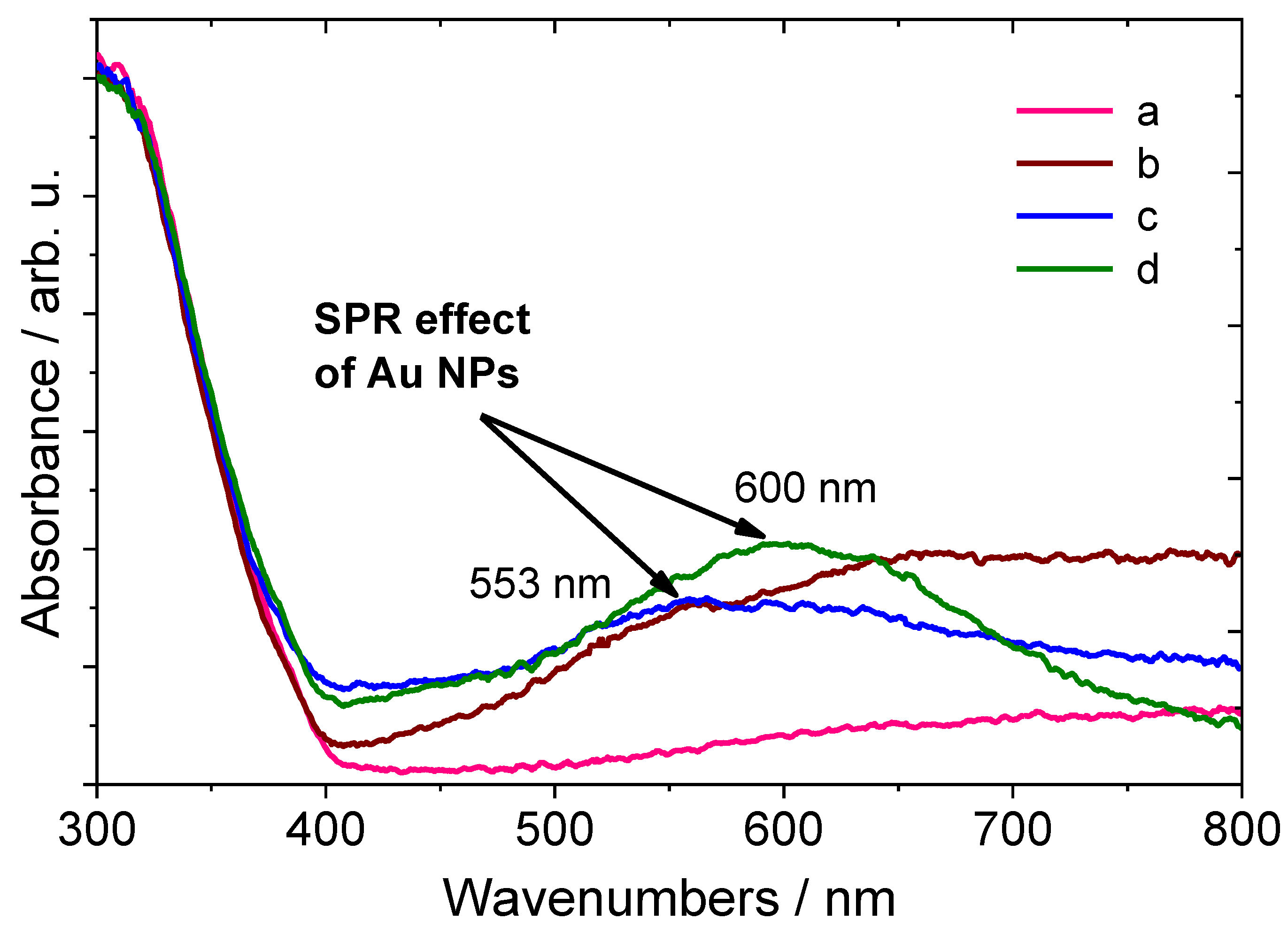
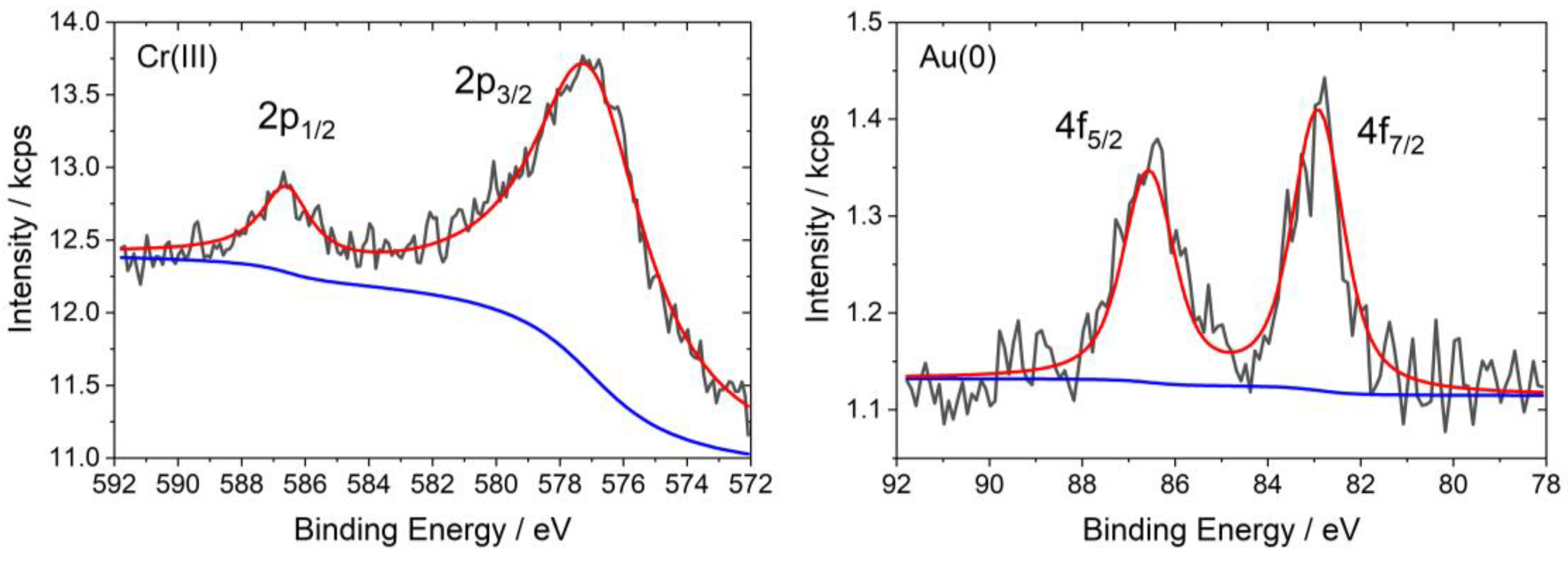
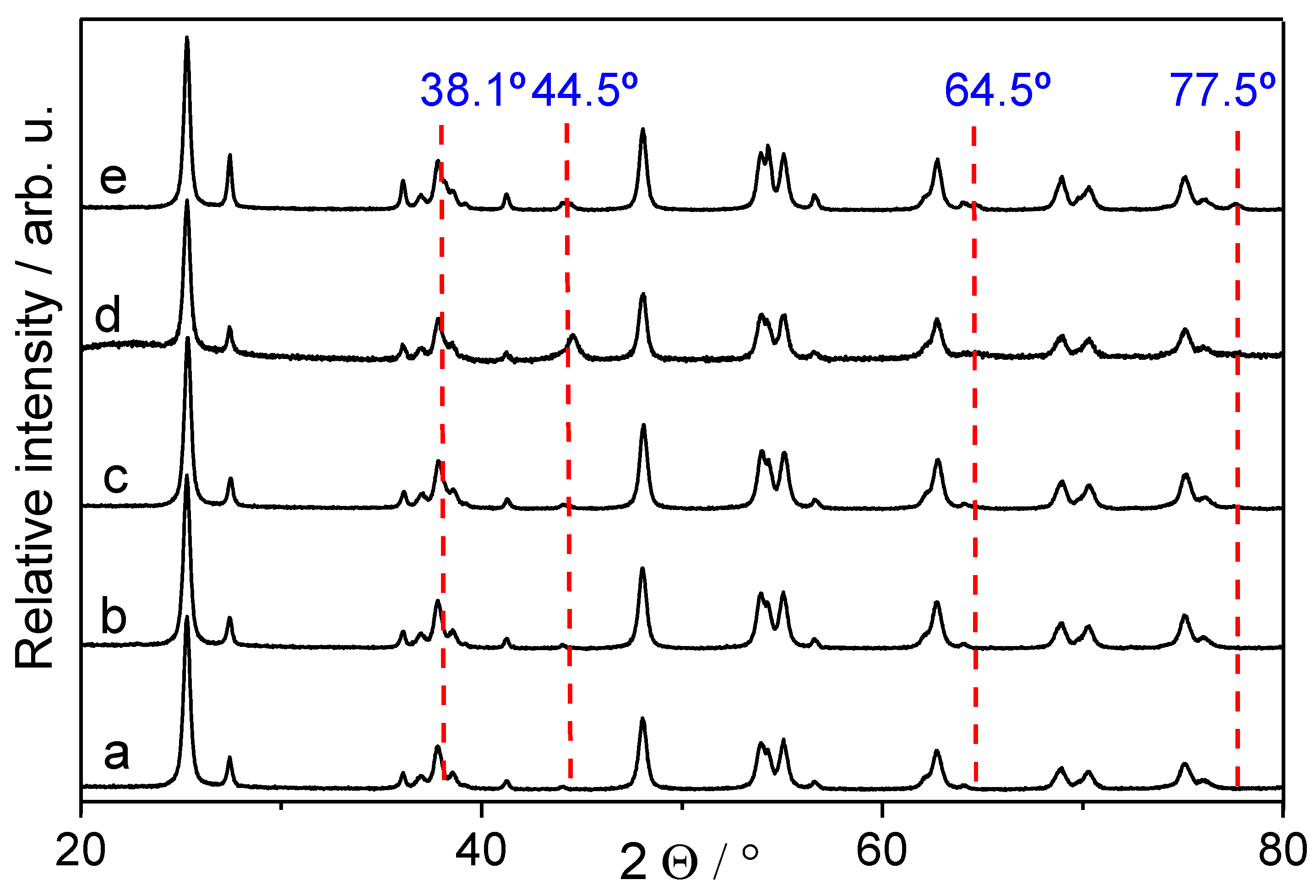
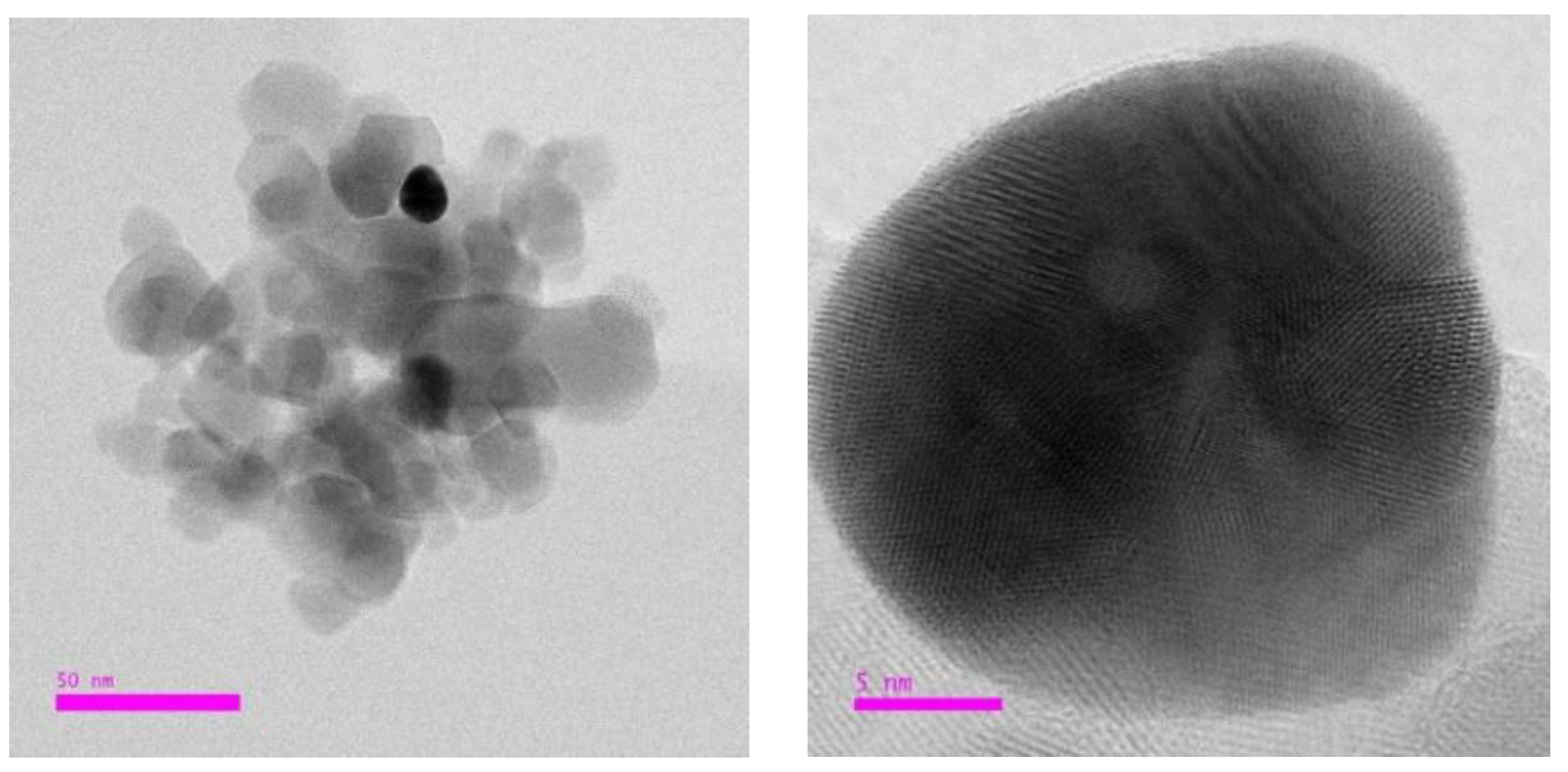
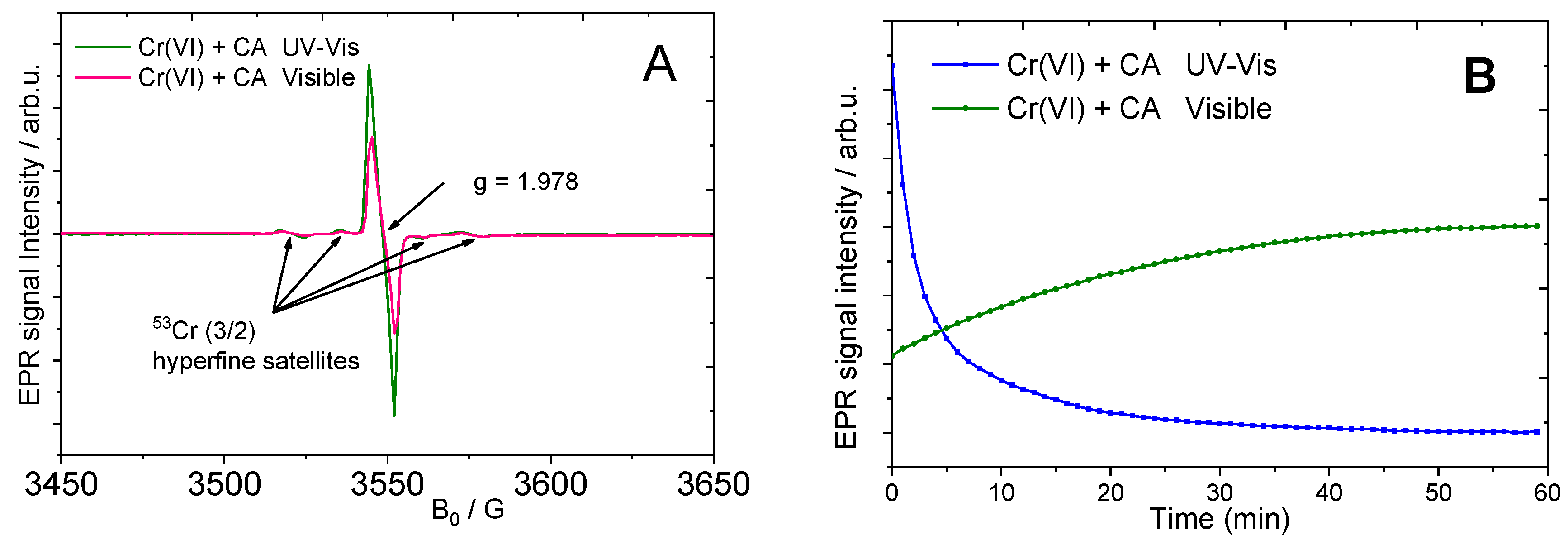
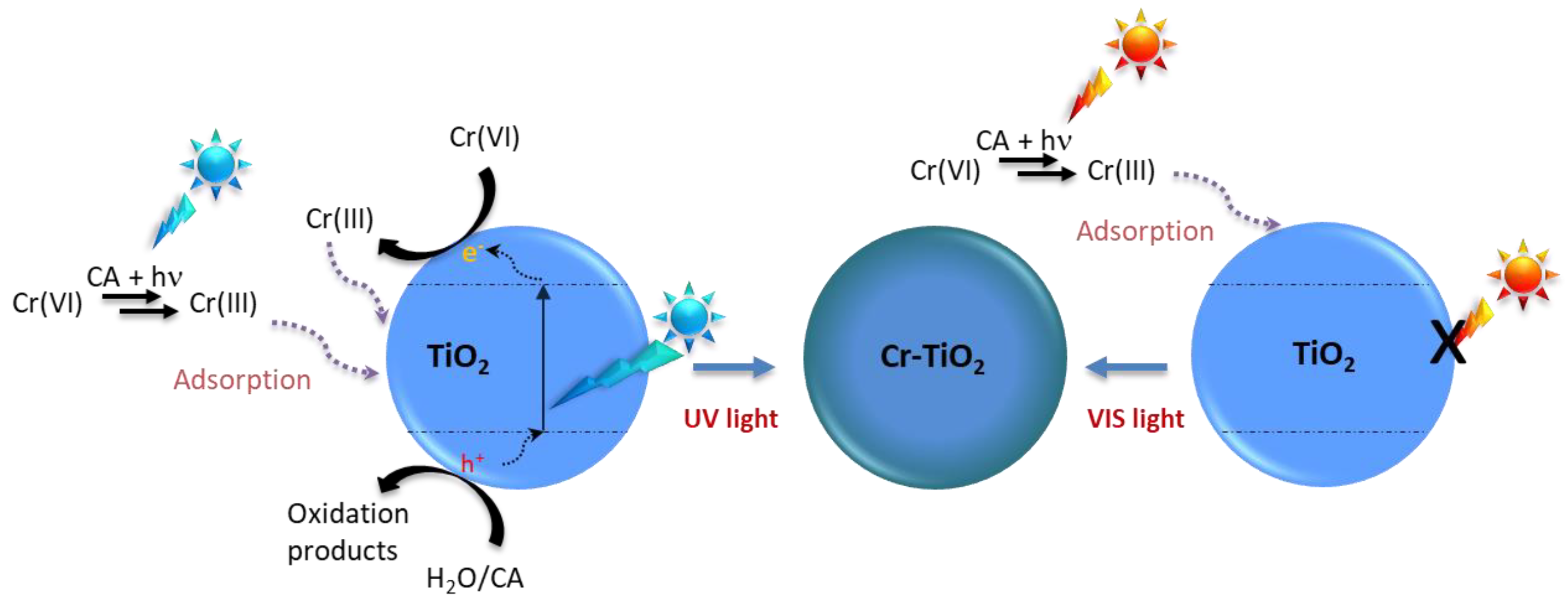
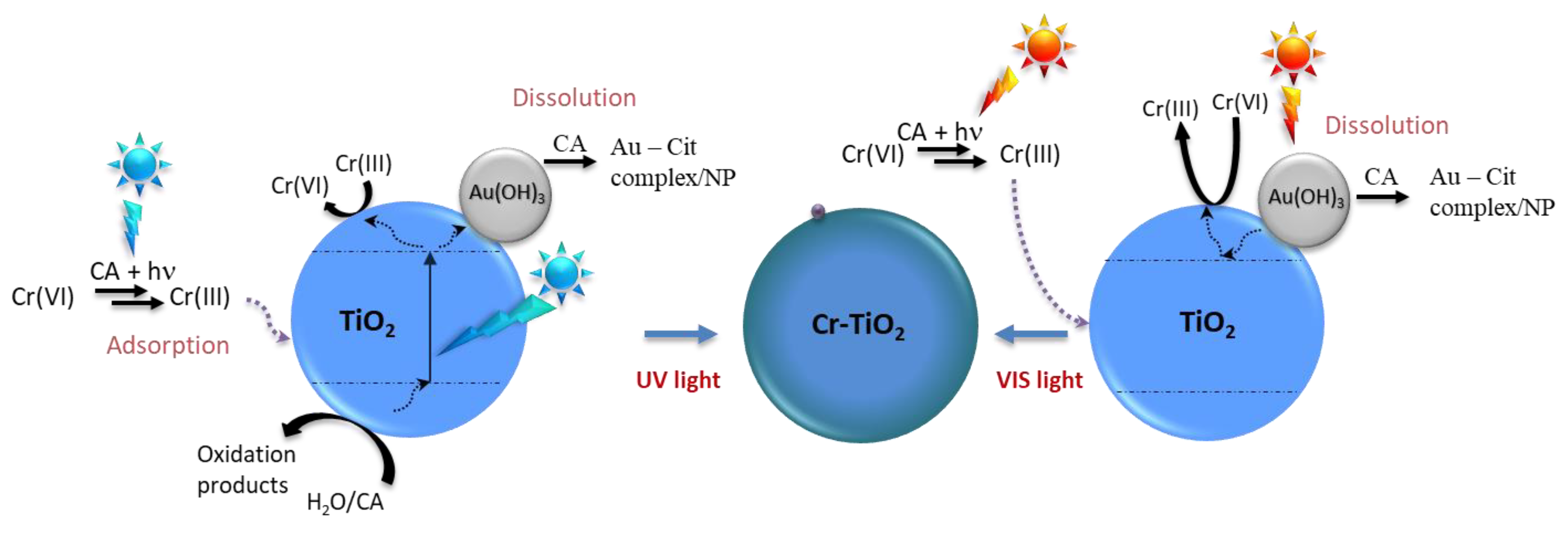

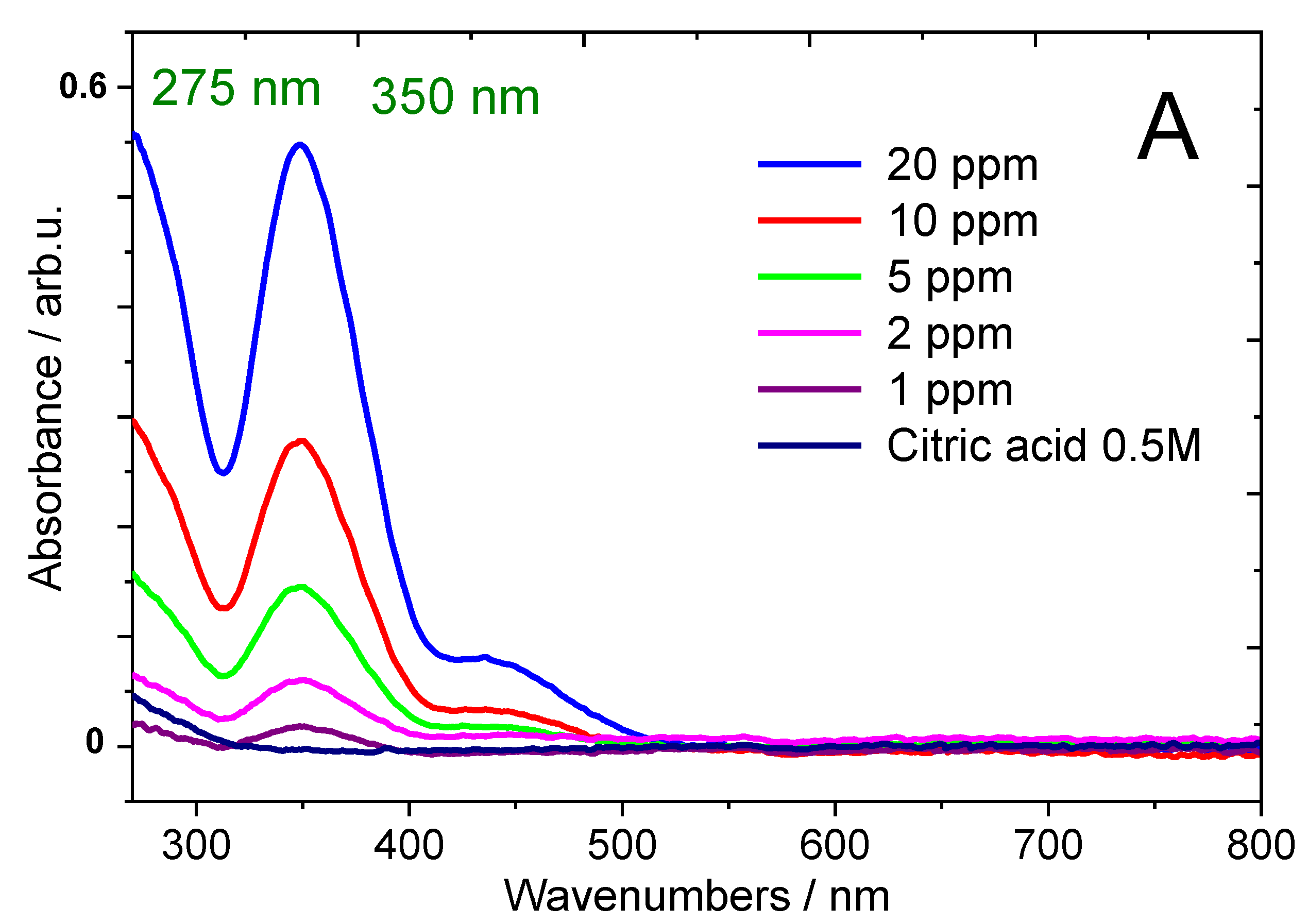

| Catalyst | No Light | No CA UV-Vis | No CA Vis | With CA UV-Vis | With CA Vis |
|---|---|---|---|---|---|
| P25 | 0 | 74 | 0 | 100 (70 2) | 92 |
| Au/P25-DP | 0 | 44 | 0 | 100 | 75 |
| Au/P25-Cal | 0 | 48 | 18 | 100 | 88 |
| no catalysts | 0 | 0 | 0 | 74 | 32 |
| Catalyst | Before Reaction (wt%) | No CA UV-Vis (wt%) | No CA Vis (wt%) | With CA UV-Vis (wt%) | With CA Vis (wt%) |
|---|---|---|---|---|---|
| P25 | Cr not determined (n.d.) | Cr 0.98 | Cr n.d. | Cr 0.72 | Cr 0.64 |
| Au/P25-DP | Au 0.62 Cr n.d. | Au 0.16 Cr 0.23 | Au 0.07 Cr 0.11 | Au 0.18 Cr 0.70 | Au 0.32 Cr 0.45 |
| Au/P25-Cal | Au 0.62 Cr n.d. | Au 0.51 Cr 0.61 | Au 0.29 Cr 0.31 | Au 0.35 Cr 0.25 | Au 0.41 Cr 0.61 |
© 2018 by the authors. Licensee MDPI, Basel, Switzerland. This article is an open access article distributed under the terms and conditions of the Creative Commons Attribution (CC BY) license (http://creativecommons.org/licenses/by/4.0/).
Share and Cite
Ngo, A.B.; Nguyen, H.L.; Hollmann, D. Criticial Assessment of the Photocatalytic Reduction of Cr(VI) over Au/TiO2. Catalysts 2018, 8, 606. https://doi.org/10.3390/catal8120606
Ngo AB, Nguyen HL, Hollmann D. Criticial Assessment of the Photocatalytic Reduction of Cr(VI) over Au/TiO2. Catalysts. 2018; 8(12):606. https://doi.org/10.3390/catal8120606
Chicago/Turabian StyleNgo, Anh Binh, Hong Lien Nguyen, and Dirk Hollmann. 2018. "Criticial Assessment of the Photocatalytic Reduction of Cr(VI) over Au/TiO2" Catalysts 8, no. 12: 606. https://doi.org/10.3390/catal8120606
APA StyleNgo, A. B., Nguyen, H. L., & Hollmann, D. (2018). Criticial Assessment of the Photocatalytic Reduction of Cr(VI) over Au/TiO2. Catalysts, 8(12), 606. https://doi.org/10.3390/catal8120606






